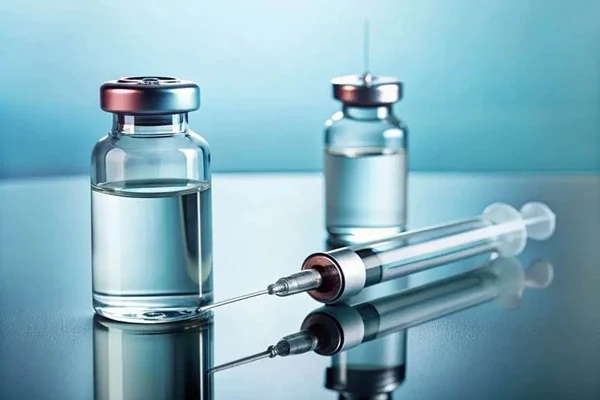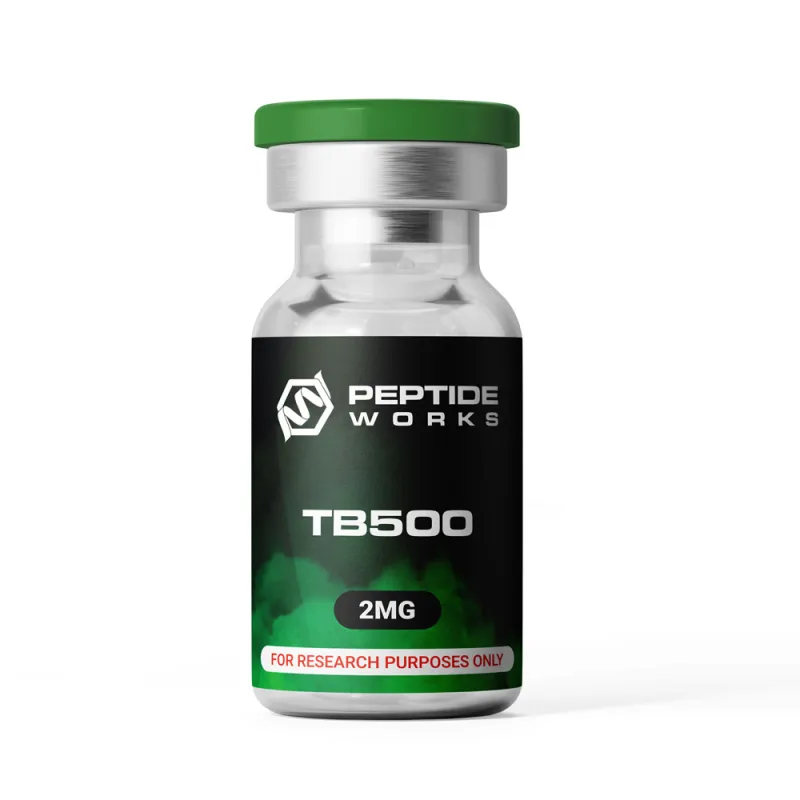
PROMO!
First order? Get 10% OFF with this code: 1storder
Written by

Have you ever wondered why certain peptides are gaining attention in research for their remarkable potential? That’s where Glow Peptides come in. These compounds are not just another scientific trend, they are being closely studied for the unique ways they may influence healing, regeneration, and overall cellular support.
Among these regenerative peptides, researchers have shown strong interest in TB500, along with well-known names like BPC-157 and GHK-Cu. These short chains of amino acids represent the building blocks of peptide structures being explored for diverse biological effects.
Each of these peptides has been highlighted in studies for different reasons, but together they are often grouped under the Glow Peptide category for the potential “bright” results seen in controlled research settings.
Explore TB500 from Peptide Works, a Glow Peptide studied for its role in cell migration, tissue repair, and vascular support.

TB500, a fragment of Thymosin Beta-4, stands out as one of the most notable Glow Peptides. Scientists highlight it because it guides repair cells to sites of injury.
This action supports tissue regeneration and drives the growth of new vascular networks, a process called angiogenesis. By promoting angiogenesis, TB500 helps supply oxygen and nutrients to damaged tissue, which supports recovery in controlled studies.
In preclinical studies, TB500 reduces inflammation and promotes repair in tendons, muscles, and skin. These effects keep TB500 at the center of Glow Peptide research and interest. Its interaction with skin cells has also been noted in models studying tissue remodeling and recovery.
Since TB500 is closely linked with blood vessel growth, it makes sense to look more closely at angiogenesis and why this process matters for Glow Peptides.

One of the most discussed effects of Glow Peptides is their potential connection to angiogenesis, the process where the body develops new blood vessels. In research, this process is important because fresh vascular networks deliver oxygen and nutrients to areas that need repair. TB500 has been studied in this context, as it appears to influence pathways linked to new vessel growth.
By encouraging angiogenesis, TB500 may support faster recovery and better cellular function in controlled studies. Other peptides like BPC-157 have also been examined for similar properties, showing potential in protecting blood vessels and improving circulation during healing.
Blood flow is only one part of recovery. Inflammation also plays a major role, and this is where BPC-157 becomes especially important.
Researchers often examine BPC-157 among the Glow Peptides for its role in healing. Inflammation is a natural defense, but when it lingers, it can damage tissue and slow recovery. Preclinical studies suggest BPC-157 may help regulate cytokines, the chemical messengers driving swelling, allowing tissues like muscles, tendons, and even the gut lining to recover under less stress.
Its connection to tissue repair is another reason it stands out. Findings describe faster recovery of soft tissues and greater stability in blood vessels, helping nutrients reach areas in need of repair. While BPC-157 is studied in relation to deeper tissue structures, GHK-Cu has been explored more for surface-level repair, such as skin health and collagen production.
Together, they represent different angles of how Glow Peptides are linked to regeneration. To see why GHK-Cu is often connected with structural repair, it helps to look at how it affects collagen synthesis and elastin.
Discover BPC-157 at Peptide Works, a Glow Peptide linked to reduced inflammation and faster recovery in connective tissues.

GHK-Cu, a well-known regenerative peptide, has been examined in laboratory and preclinical models. Findings suggest it can activate fibroblasts, the cells responsible for producing collagen and elastin.
These proteins are key for firmness and elasticity, and their decline is a hallmark of aging skin in research observations. Studies have shown GHK-Cu can increase dermal thickness and improve overall tissue quality in controlled settings, leading to visibly healthier skin and smoother skin.
At the molecular level, GHK-Cu appears to influence enzymes called MMPs, which normally break down collagen, while also raising TIMPs, their natural inhibitors. This supports balanced production of collagen, helping maintain the skin barrier function and smoother texture of the dermis.
This balance helps preserve existing fibers while encouraging new growth, which is why GHK-Cu remains an important focus in peptide regeneration studies. This naturally leads to a closer look at MMPs and TIMPs themselves, since they play such a direct role in collagen balance.
In skin biology, MMPs (matrix metalloproteinases) break down collagen and elastin, while TIMPs (tissue inhibitors of metalloproteinases) slow that process. In peptide regeneration research, GHK-Cu has been studied for how it interacts with this balance.
Research suggests it can lower MMP activity and raise TIMP expression, helping preserve existing fibers in the dermal matrix. By shifting the MMP/TIMP ratio, GHK-Cu reduces tissue breakdown and allows fibroblasts to rebuild collagen I and III and elastin more effectively.
Controlled models have shown increases in dermal thickness, improved skin elasticity, and reduced markers of matrix loss. With each peptide targeting a different level of repair, comparing them side by side shows how they complement one another in skin rejuvenation and structural renewal.
Shop GHK-Cu at Peptide Works, a Glow Peptide noted for stimulating collagen and elastin production to support skin and matrix strength.
The main difference among these Glow Peptides lies in how they influence recovery. TB-500 acts on broad tissue systems by guiding cell movement and supporting vascular growth. The difference between TB-500 and BPC-157 is that BPC-157 narrows its role to connective structures, where it helps stabilize tendons, ligaments, and gut tissue. GHK-Cu works in the extracellular matrix, boosting collagen and elastin for skin and structural strength.
| Peptide | Area of Action | Distinct Focus |
|---|---|---|
| TB500 | Systemic tissue repair | Wide cell coordination, vessel support |
| BPC-157 | Connective tissues | Targeted repair, cytokine balance |
| GHK-Cu | Extracellular matrix | Collagen and elastin reinforcement |
Looking ahead, the future of Glow Peptides shows why these compounds continue to attract so much attention in regenerative studies.
Research on Glow Peptides continues to grow, compounds like TB500, BPC-157, and GHK-Cu are gaining attention for their different roles in repair and regeneration.
Each offers a distinct pathway of action, and together they highlight the broad potential of this peptide category. Ongoing studies suggest that Glow Peptides will remain an important focus for discovery in the years ahead.
At Peptide Works, we provide high-quality research peptides, including Glow Peptides, with worldwide shipping to support advanced study.
All peptides and compounds mentioned are strictly for research purposes only and not for human use.
[1] Pickart L, Margolina A. Regenerative and Protective Actions of the GHK-Cu Peptide in the Light of the New Gene Data. Int J Mol Sci. 2018 Jul 7;19(7):1987.
[2] Pickart L, Vasquez-Soltero JM, Margolina A. The human tripeptide GHK-Cu in prevention of oxidative stress and degenerative conditions of aging: implications for cognitive health. Oxid Med Cell Longev. 2012;2012:324832.
[3] Maar K, Hetenyi R, Maar S, Faskerti G, et al. Utilizing Developmentally Essential Secreted Peptides Such as Thymosin Beta-4 to Remind the Adult Organs of Their Embryonic State-New Directions in Anti-Aging Regenerative Therapies. Cells. 2021 May 28;10(6):1343.
[4] Huang T, Zhang K, Sun L, Xue X, et al. Body protective compound-157 enhances alkali-burn wound healing in vivo and promotes proliferation, migration, and angiogenesis in vitro. Drug Des Devel Ther. 2015 Apr 30;9:2485-99.
[5] Seiwerth S, Milavic M, Vukojevic J, Gojkovic S, et al. Stable Gastric Pentadecapeptide BPC 157 and Wound Healing. Front Pharmacol. 2021 Jun 29;12:627533.
ALL CONTENT AND PRODUCT INFORMATION AVAILABLE ON THIS WEBSITE IS FOR EDUCATIONAL PURPOSES ONLY.
DISCLAIMER: These products are intended solely as a research chemical only. This classification allows for their use only for research development and laboratory studies. The information available on our Peptide Works website: https://peptide-works.com/ is provided for educational purposes only. These products are not for human or animal use or consumption in any manner. Handling of these products should be limited to suitably qualified professionals. They are not to be classified as a drug, food, cosmetic, or medicinal product and must not be mislabelled or used as such.
Peptide Works
Related Articles

Best Peptides for Women in Perimenopause: From Libido to Energy
Do you feel drained, struggle with focus, or notice your drive slipping during perimenopause? These changes are some of the

PT-141 for Women in Perimenopause: A Breakthrough for Low Libido
Perimenopause can bring more than just physical changes it often affects how women feel about intimacy, confidence, and connection. Many

Can Vitamin B12 Immune System Support Enhance the Effects of Thymosin Alpha-1?
The Vitamin B12 immune system link is important because this vitamin plays a crucial role in DNA synthesis, methylation, energy